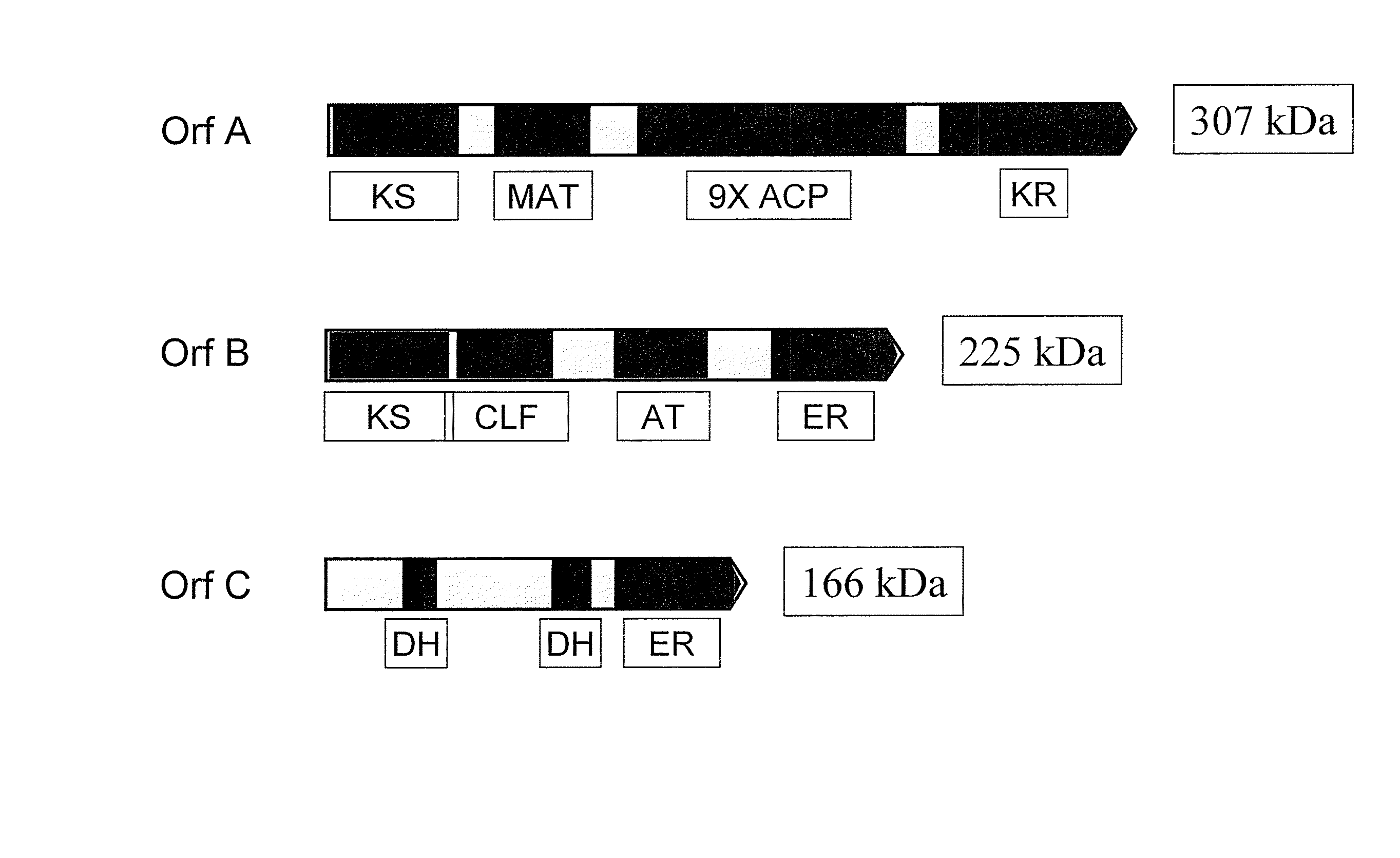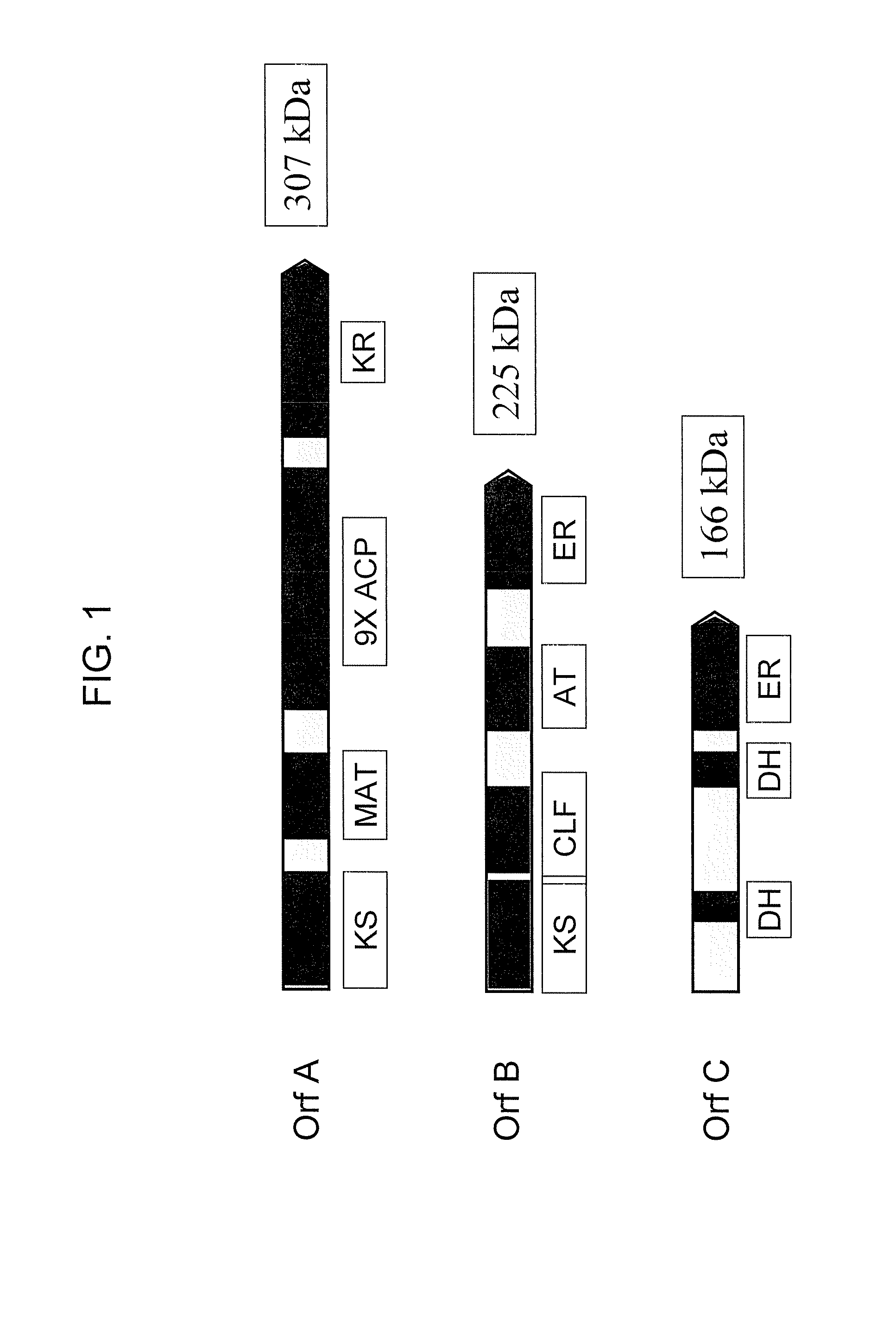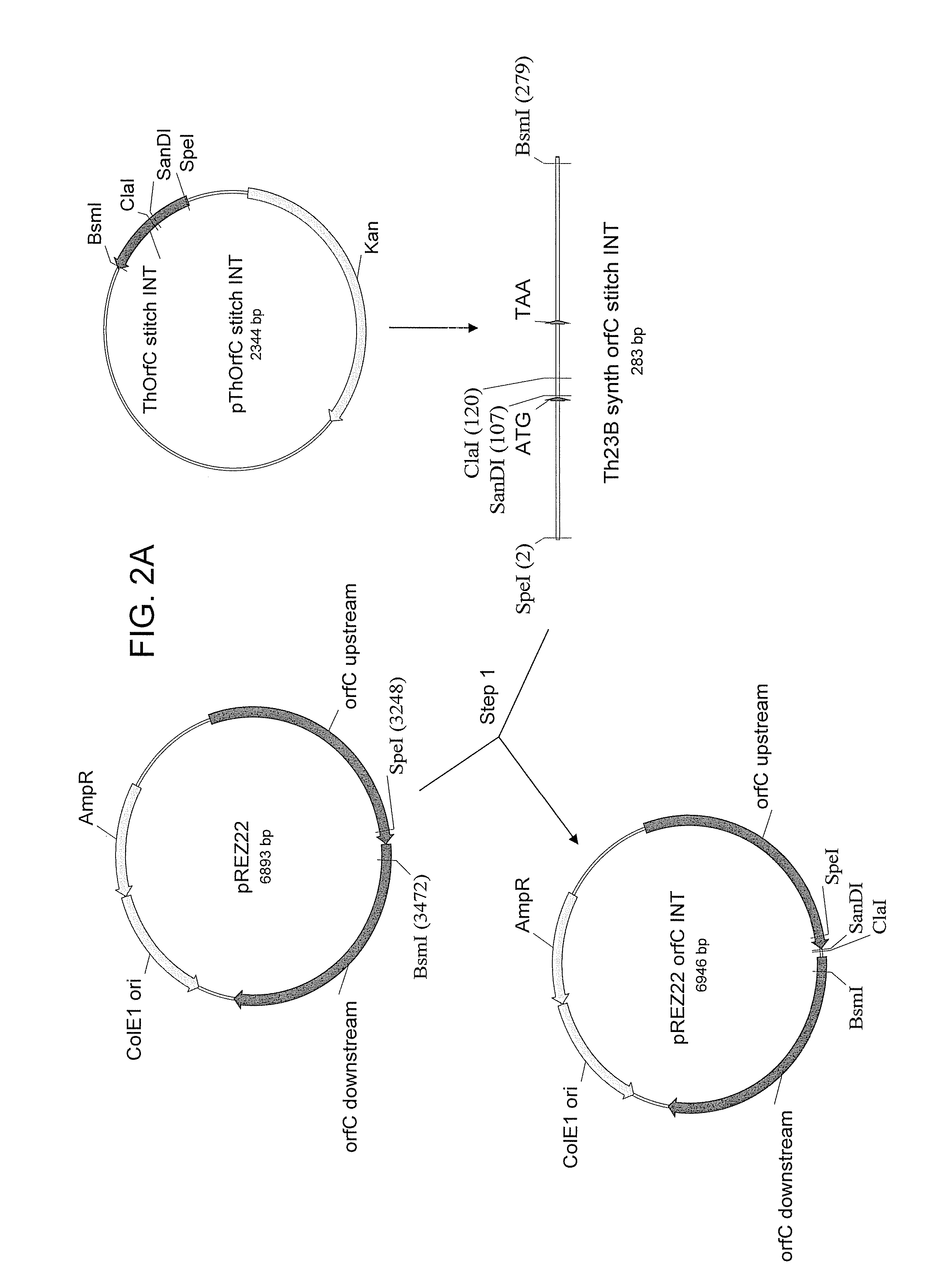Chimeric pufa polyketide synthase systems and uses thereof
- Summary
- Abstract
- Description
- Claims
- Application Information
AI Technical Summary
Benefits of technology
Problems solved by technology
Method used
Image
Examples
Example
Example 1
[0291] The following example describes the construction of a synthetic Th.23B OrfC cloning vector for use in Schizochytrium.
[0292] Codon usage data for four large genes from Schizochytrium (e.g., ATCC 20888 or Schizochytrium N230D) (orfA, orfB, orfC, and FAS; described in U.S. Patent Application Publication No. 20020194641, U.S. Patent Application Publication No. 20070089199, or U.S. Patent Application Publication No. 20050191679) were combined. Given that Schizochytrium ATCC 20888 produces high levels of fatty acids, it is expected that these genes are highly expressed. Codons with less than about 3% representation (within those for a given amino acid) were eliminated, and the relative usage of the remaining codons was adjusted. Table 1 shows Schizochytrium codon usage, adjusted usage, and codon usage for non-synthetic Th.23B orfC. DNA2.0 (Menlo Park, Calif.) was used to analyze these codon usage data to design and synthesize a coding region for Thraustochytrium 23B orfC...
Example
Example 2
[0298] The following example describes the creation of a construct encoding Schizochytrium OrfC comprising a DH2 domain from Thraustochytrium 23B.
[0299] The DH2 region of Schizochytrium ATCC20888 OrfC (SEQ ID NO:30) was replaced with that from Thraustochytrium 23B ATCC 20892 (SEQ ID NO:66) at specific 5-prime and 3-prime cross-over points by a combination of PCR-based overlap extension (“Splicing by Overlap Extension” or “SOEing” (Horton, R. M., (1993) In Vitro Recombination and Mutagenesis of DNA. SOEing together tailor-made genes. Methods in molecular Biology Vol. 15: PCR Protocols: Current Methods and Applications Chapter 25 pp 251-266 (B. A. White, Ed.) Humana Press, Totawa, N.J.)) and restriction cloning.
[0300] More specifically, in this example, the inventors constructed a nucleic acid molecule encoding a hybrid (chimeric) OrfC polypeptide (amino acid sequence represented herein by SEQ ID NO:74), 1493 amino acid residues in length, in which the DH2 region, defined ...
Example
Example 3
[0314] The following example describes the construction of a construct encoding Schizochytrium OrfC comprising a DH2 domain from Thraustochytrium 23B, wherein the DH2 domain has been resynthesized to be optimized for Schizochytrium codon usage.
[0315] In this example, the inventors constructed a nucleic acid molecule encoding a hybrid OrfC polypeptide (SEQ ID NO:74), 1493 amino acid residues in length, in which the DH2 region, defined as amino acids 516-1041 of this hybrid, consists of the amino acid sequence of the DH2 region of the Th.23B OrfC protein; that is, amino acids 491-1016 of SEQ ID NO:62, which includes all of SEQ ID NO:66 (described as the DH2 domain of Thraustochytrium 23B herein). The remainder of the hybrid OrfC amino acid sequence, residues 1-515 and 1042-1493 of SEQ ID NO:74, are identical to Schizochytrium OrfC residues 1-515 and 1051-1502 of SEQ ID NO:6, respectively. Moreover, in this construct, the DNA sequence encoding amino acids 516-1041 was derive...
PUM
| Property | Measurement | Unit |
|---|---|---|
| Fraction | aaaaa | aaaaa |
| Length | aaaaa | aaaaa |
| Digital information | aaaaa | aaaaa |
Abstract
Description
Claims
Application Information
 Login to view more
Login to view more - R&D Engineer
- R&D Manager
- IP Professional
- Industry Leading Data Capabilities
- Powerful AI technology
- Patent DNA Extraction
Browse by: Latest US Patents, China's latest patents, Technical Efficacy Thesaurus, Application Domain, Technology Topic.
© 2024 PatSnap. All rights reserved.Legal|Privacy policy|Modern Slavery Act Transparency Statement|Sitemap



